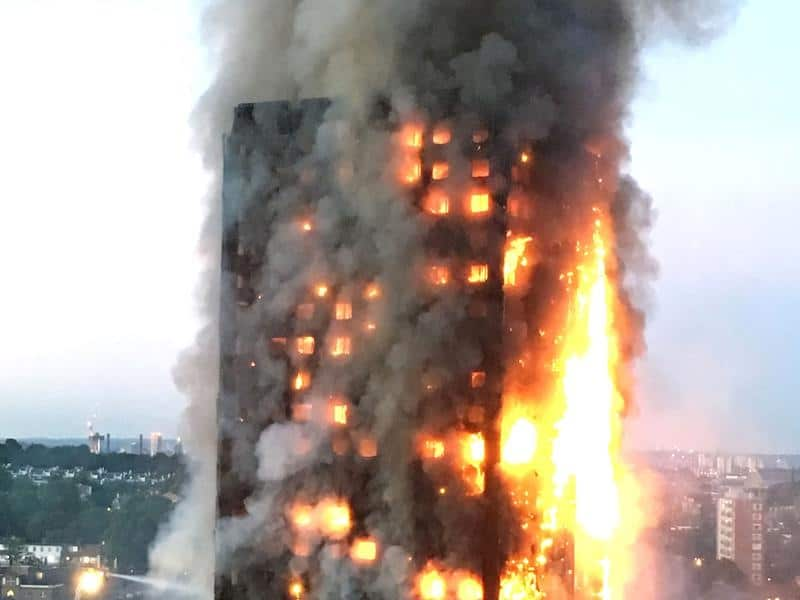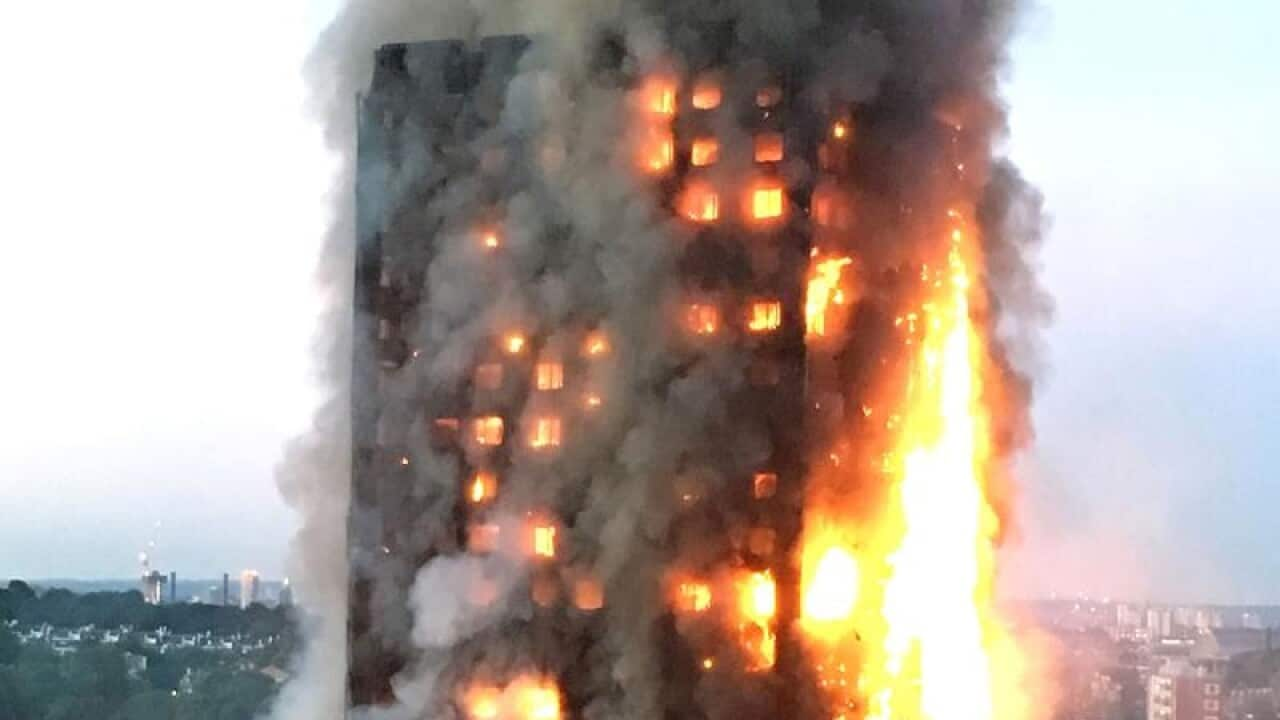It has been two years since the Grenfell Tower inferno in London claimed the lives of 72 people, including two Australians.
Seventy-one-year-old Vicky King and her daughter Alexandra Atala, 40, were found side-by-side in their 20th-floor
The pair had been estranged from family until shortly before the tragedy. In a statement last year, Ms King's older sister Penny Pearce said: "They were and are still together and that is what is most important."
In a statement last year, Ms King's older sister Penny Pearce said: "They were and are still together and that is what is most important."

Grenfell Tower fire victim Vicky King. Source: Supplied by Danyal Syed
"The fire is a tragedy for all of us."

Childhood photograph of Victoria King (right) with her sister Penny. Source: Grenfell Tower Inquiry
Survivors and relatives of those who died are now taking legal action in the United States.
Lawyer Robert Mongeluzzi argued faulty building materials were to blame for the extent of the fire and its spread.
"They didn't retard the flames, they accelerated the flames, and that caused this fire to spread, propagate and trap those unfortunate souls in the building with no way out," he said. The blaze started in an apartment refrigerator and raced up the side of the 24-storey residential building.
The blaze started in an apartment refrigerator and raced up the side of the 24-storey residential building.

The Grenfell Tower fire. Source: AAP
The building's exterior cladding was made of highly flammable material and lawyers argued the insulation was also combustible.
The liability suit has been launched in the US, rather than the United Kingdom, because it involves US-based companies; refrigerator maker Whirlpool, cladding manufacturer Arconic Inc. and insulation maker Celotex. Mr Mongeluzzi told a state court in Philadelphia this week the legal action was requested by victims of the tragedy.
Mr Mongeluzzi told a state court in Philadelphia this week the legal action was requested by victims of the tragedy.

Seventy-two people died in the June 2017 fire. Source: EPA
"We've been asked by the victims, to hold these corporations accountable, to make sure that they can not hide behind international borders but be held accountable for their conduct."
"They don't want this to ever happen again."
Flammable cladding in Australia
The fire brought global attention to the danger of flammable cladding on high-rise building exteriors.
The 2014 Lacrosse tower fire in Melbourne Docklands, and Spencer Street's Neo200 tower fire in Melbourne's CBD earlier this year, both involved buildings with combustible cladding similar to that on Grenfell Tower.
State and federal governments have moved to tighten restrictions on the use of combustible cladding on buildings. It has prompted multi-million dollar legal disputes over who is to blame for using the materials, and who should pay to remove them. Hubert Wajszel from Barry Nilsson Lawyers said some property owners feel they have no choice but to take legal action to have their dangerous cladding replaced.
Hubert Wajszel from Barry Nilsson Lawyers said some property owners feel they have no choice but to take legal action to have their dangerous cladding replaced.

Neo200 Tower fire damage. Source: AAP
"The cost involved in having to find a solution, and that, as it currently stands, really seems to be about replacing the cladding, is such that I would expect that owners will have no choice but to go down the path of litigation," he said.
Each state has responded differently to the issue of non-compliant cladding.
In New South Wales and Victoria, the responsibility for removing the fire hazard from privately owned high-density housing has fallen on property owners.
Simon Lockrey is a design, sustainability and innovation researcher at RMIT University, and said some apartment owners are being forced to pay more than a $100,000 to make their homes safe and compliant.
"They're facing the mental trauma of living in these apartments and an uncertain financial future with no real information or due process on what's actually happening from the regulators that are forcing them to go ahead and try and fix these buildings themselves," he said.
Dr Lockrey believes there has been a nationwide failure of policing when it comes to building policies.
"We're very good at protecting people on building sites and we've got very good protections for construction workers, but the irony is we've built a whole lot of buildings that aren't safe for the people who live in them. It's ironic."
Mortgages axed
Apartment owners who don't have the capital to pay for the cladding to be replaced will likely find it increasingly more difficult to borrow the required finances.
Australian non-bank lender Resimac is the first to axe mortgages against apartments known - or suspected - of having combustible cladding.
Mortgage broker Christopher Foster-Ramsay expects other non-bank lenders will follow, with many already putting the policy into practice. He said it is leaving affected property owners in a bind.
"What you've got is potentially thousands of home owners that have bought apartments, and they love the location and they bought there for a reason, where their hands are tied."
"They can't refinance, they can't withdraw equity to get themselves out of the situation, so it really probably does need some type of government involvement at some level to assist in the rectification works."
Government intervention
University of New South Wales architecture lecturer Geoff Hanmer has called on Australia's federal government to step in.
"All the governments have to work together to solve this problem but the lack of action, the lack of leadership by the federal government and the responsible minister is breathtaking," Mr Hamner said.
RMIT University's Dr Lockrey has echoed his call, likening the situation to a national crisis.
"Any normal, considered person would say that there must be action now by government, that this is an emergency situation and that we should be providing assistance for them - like the climate assistance that we do when there's a drought or a disaster."
"This is a disaster, this is a disaster in our cities.'


